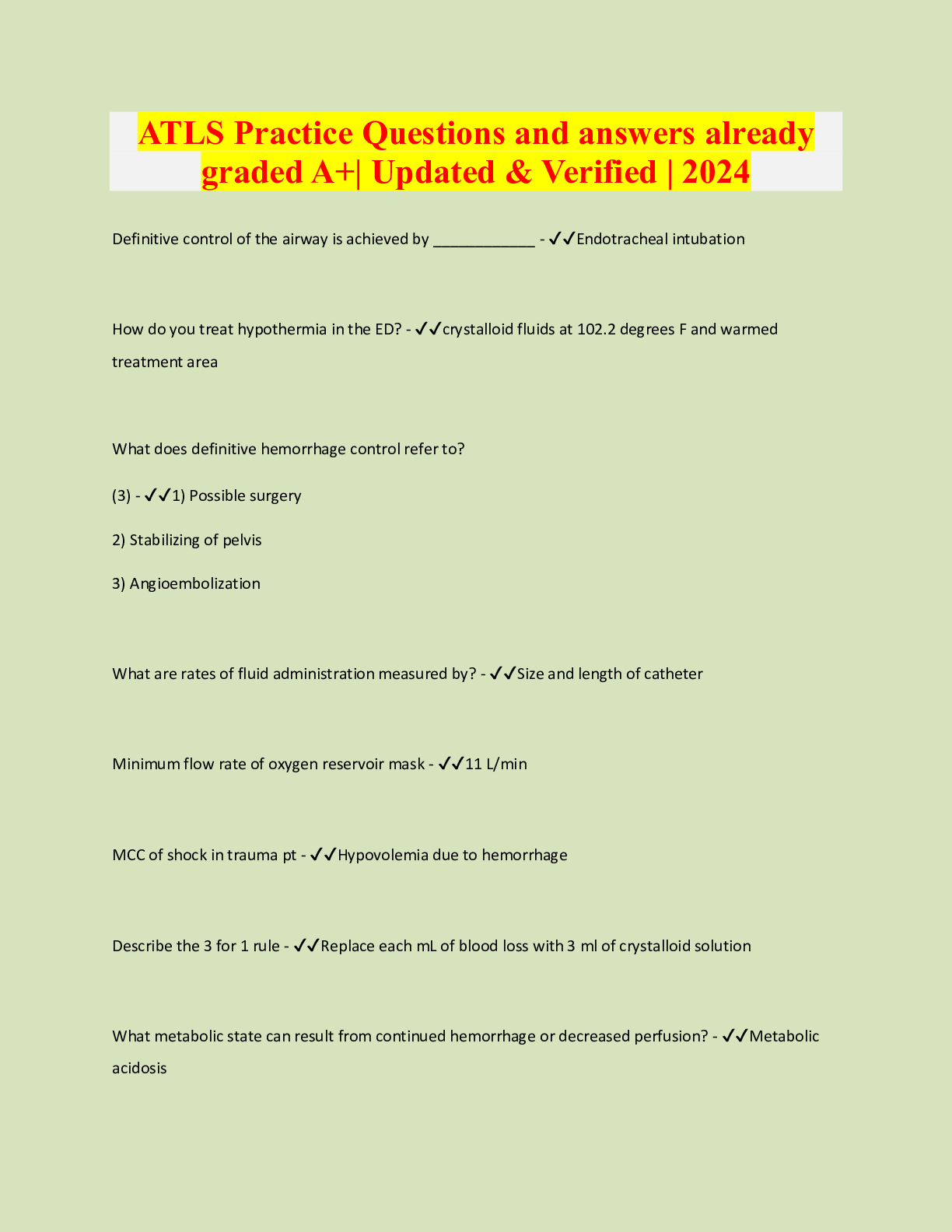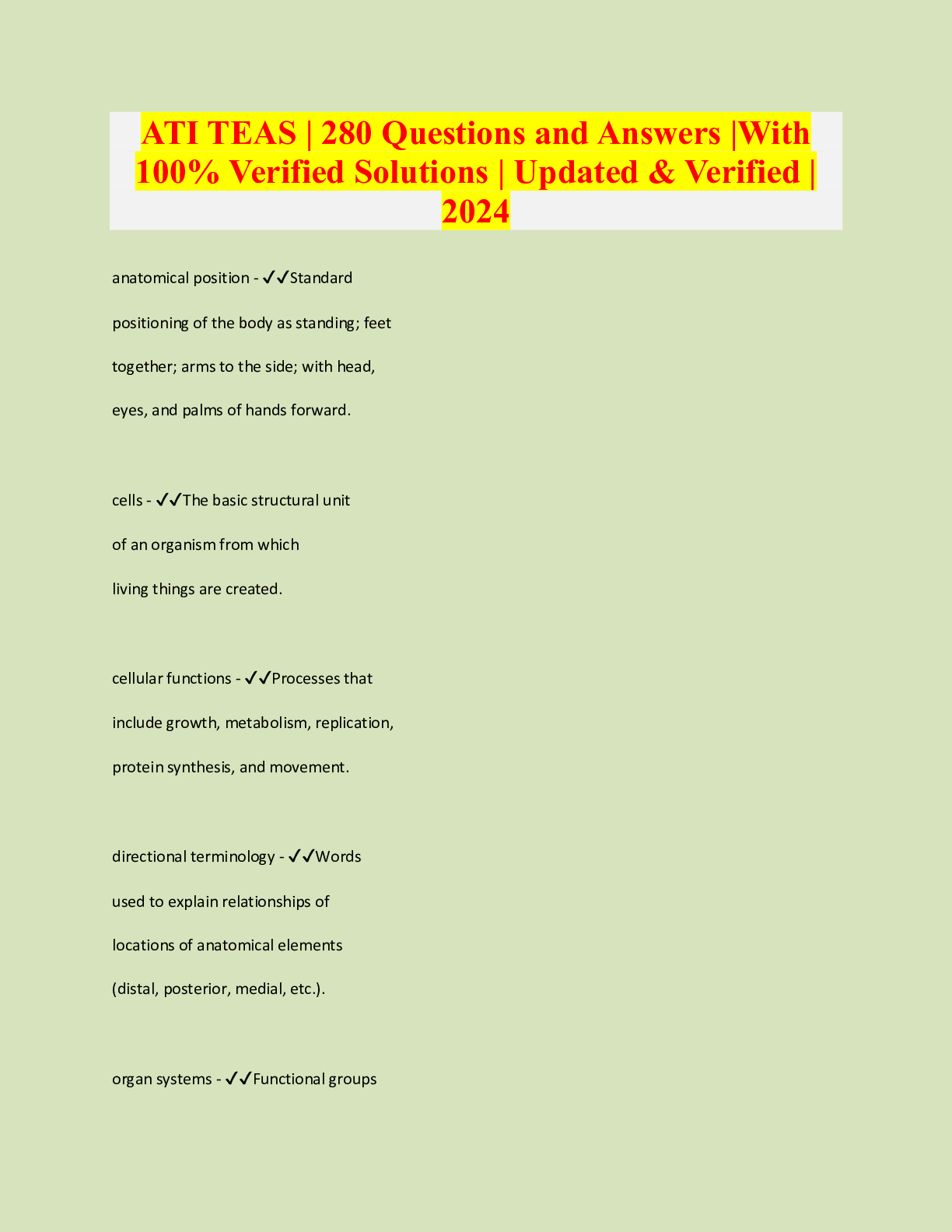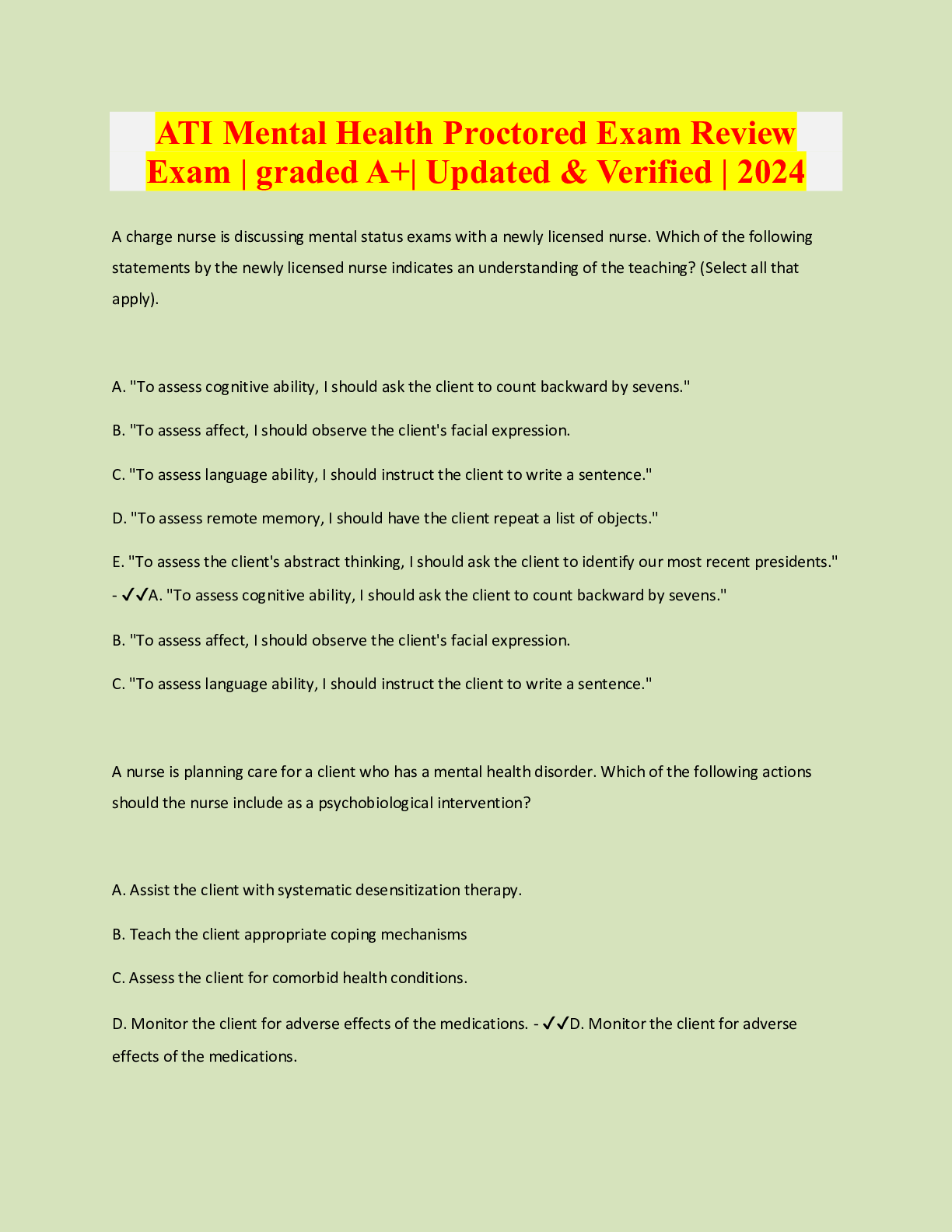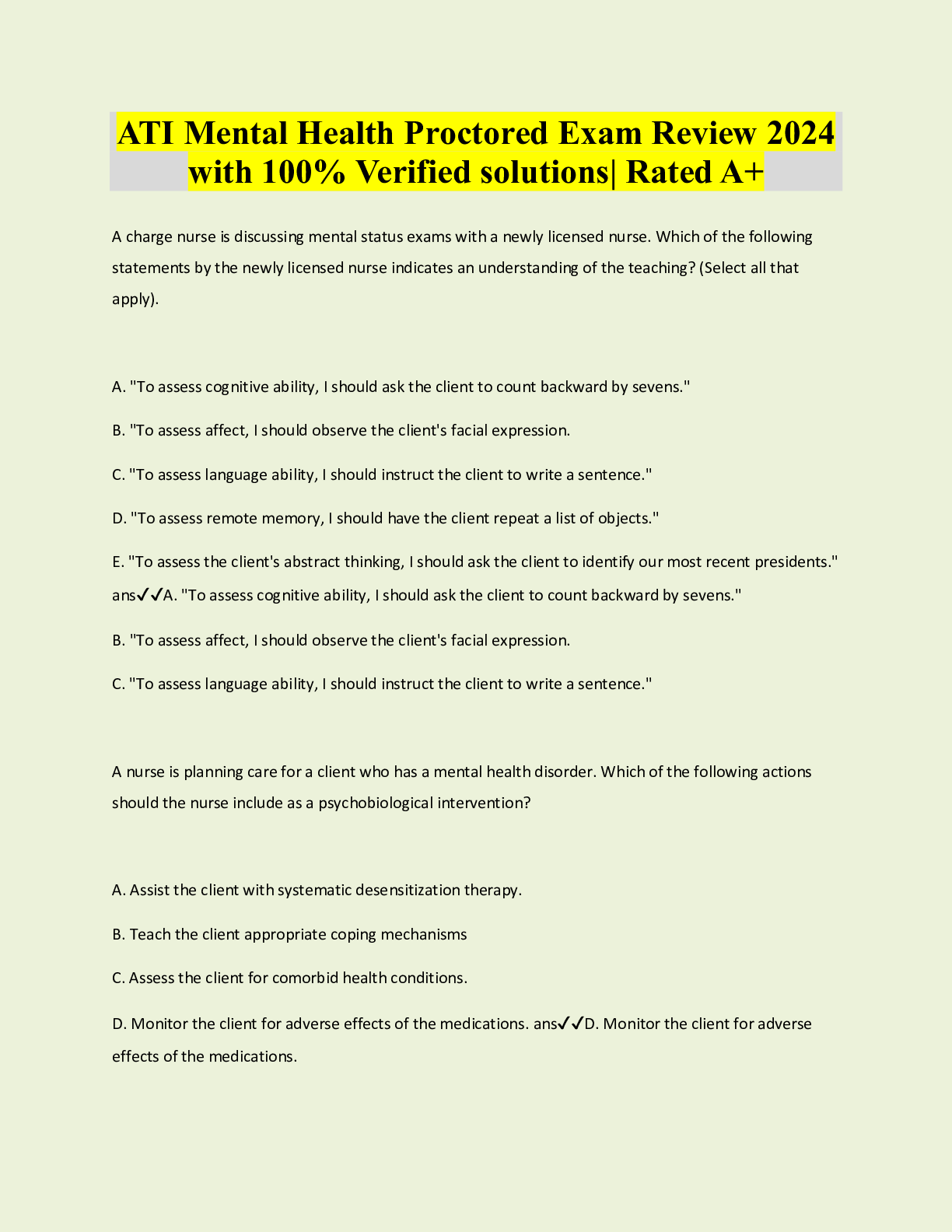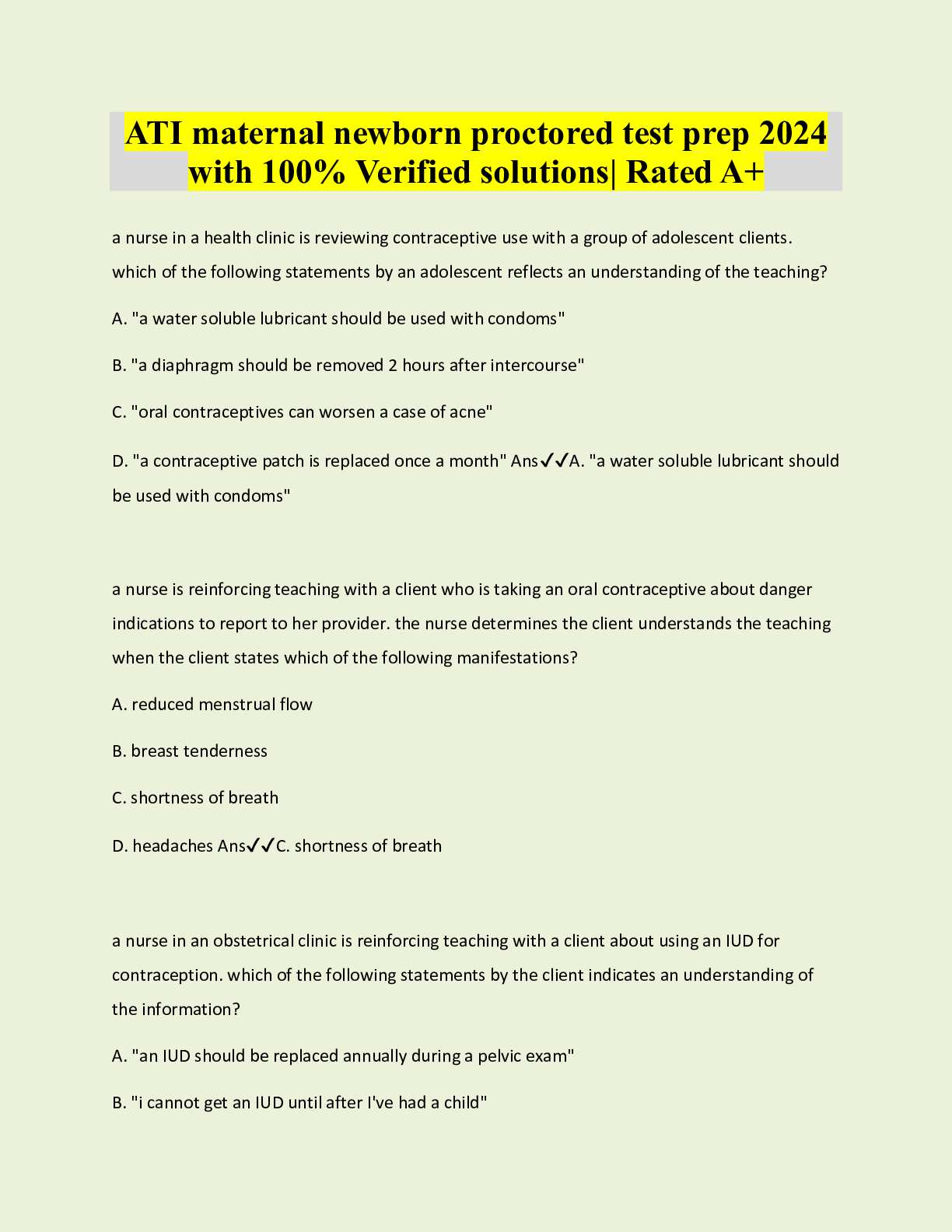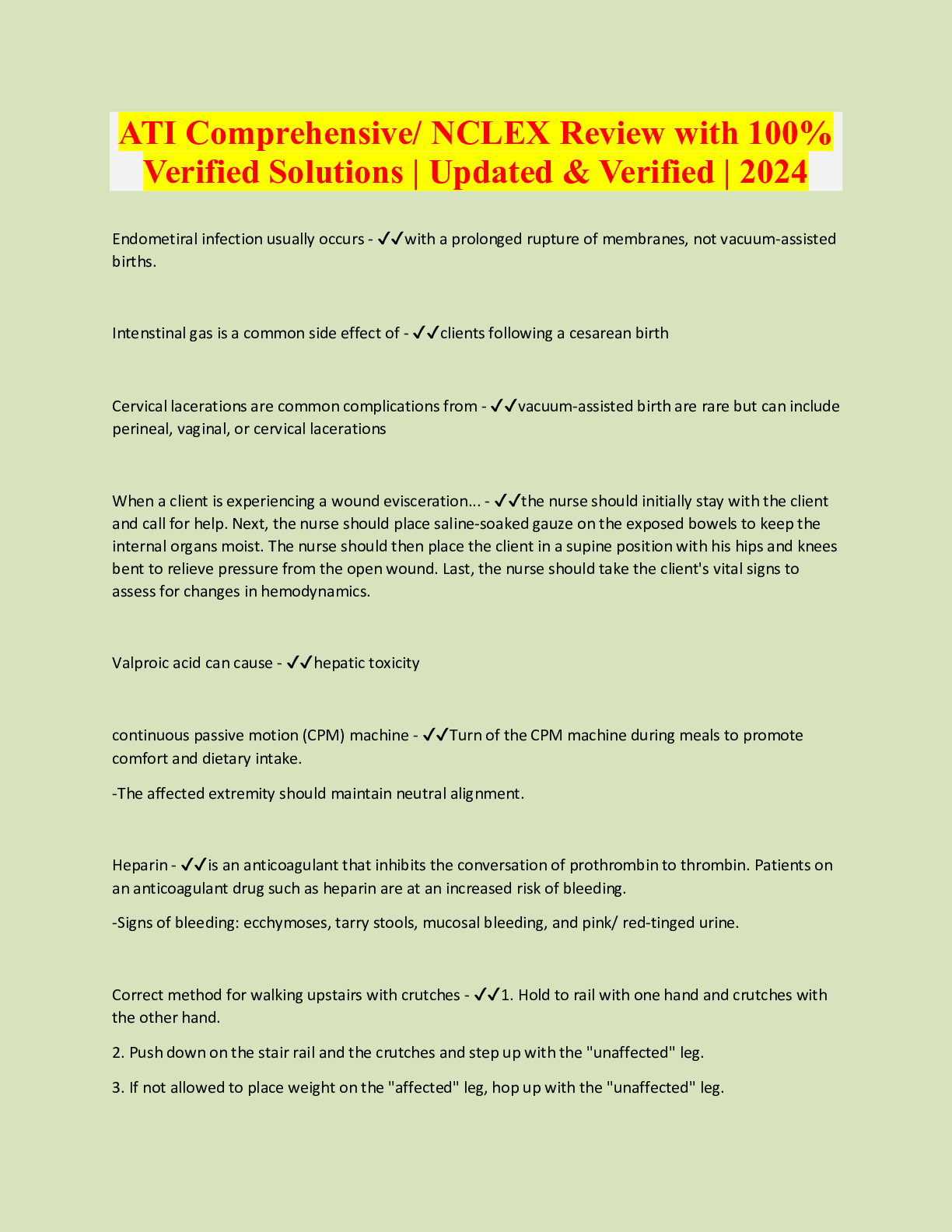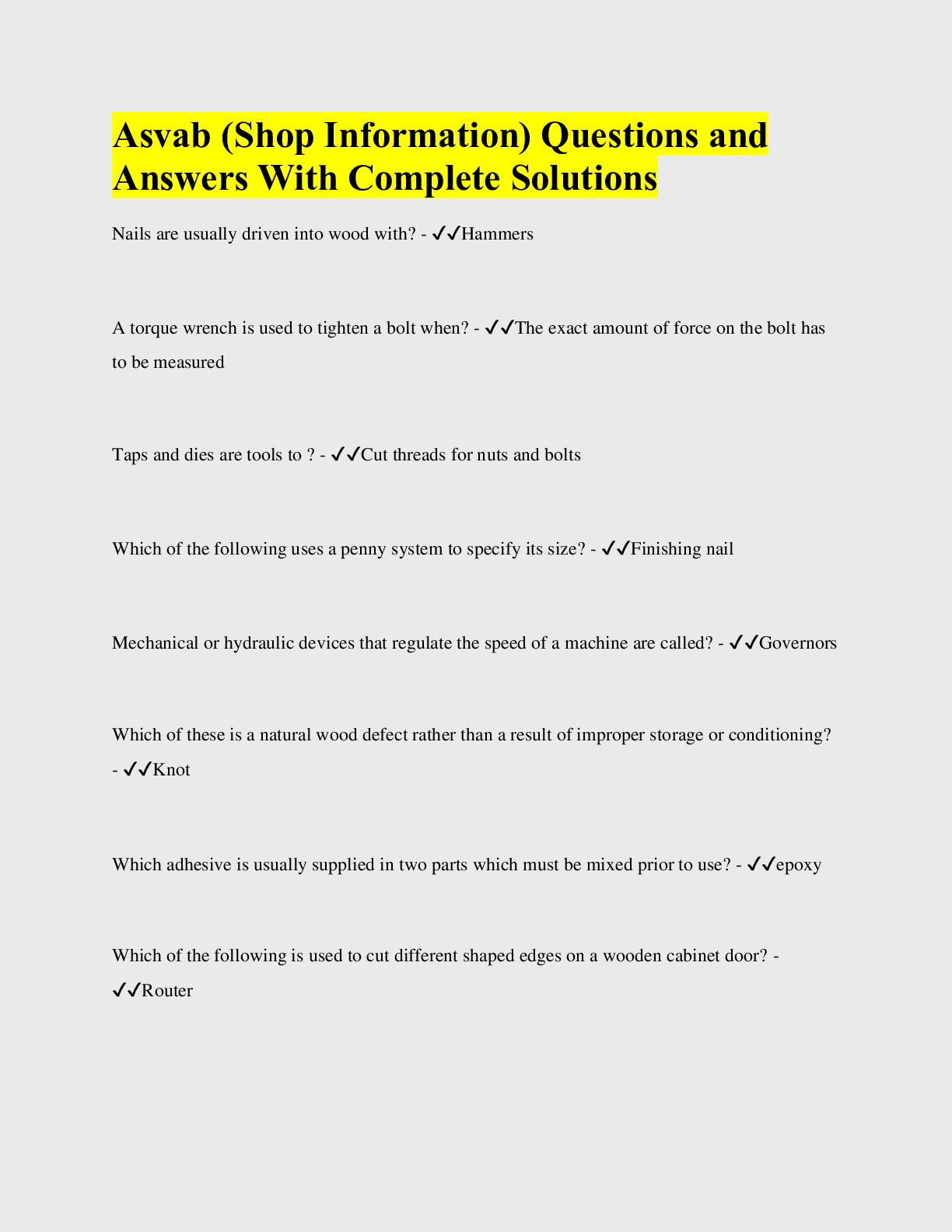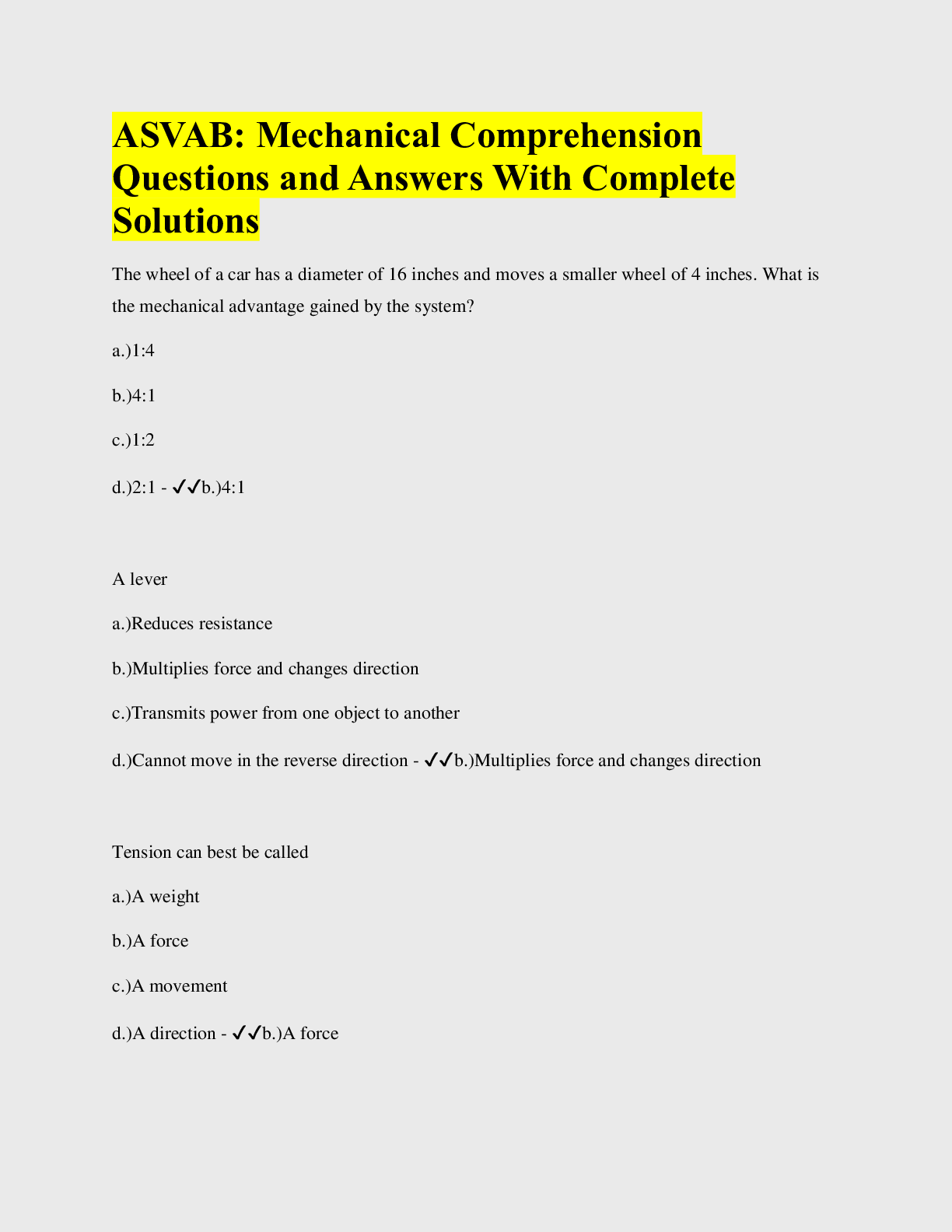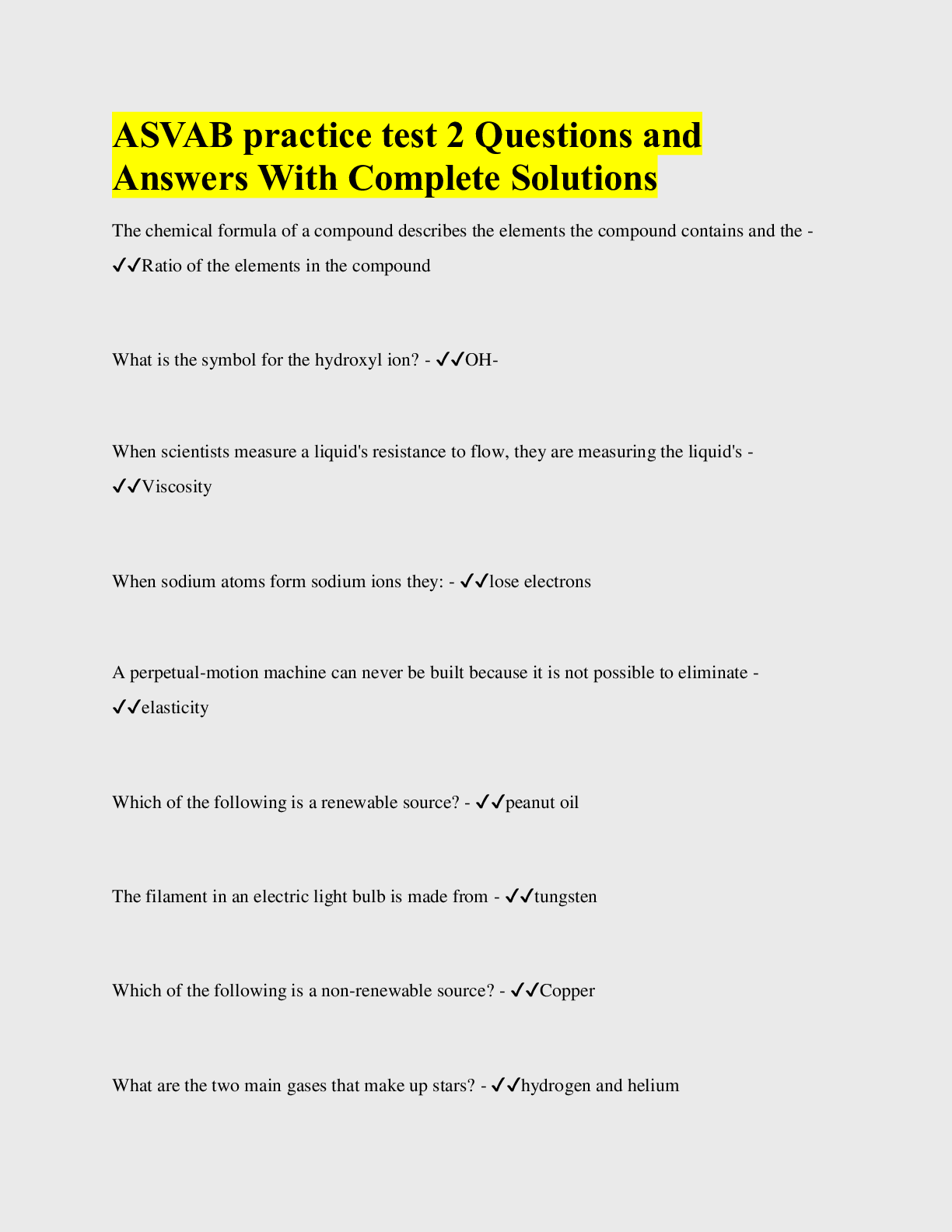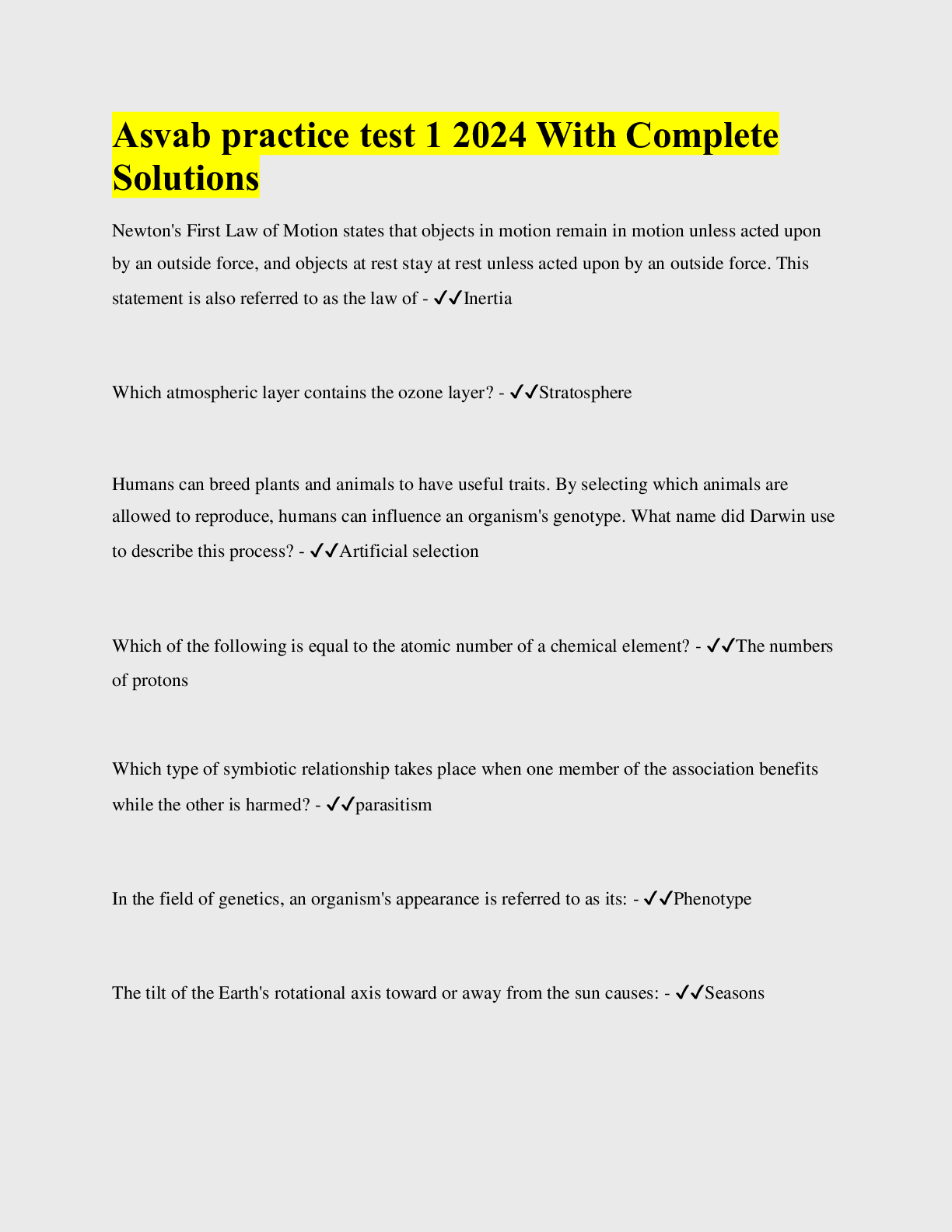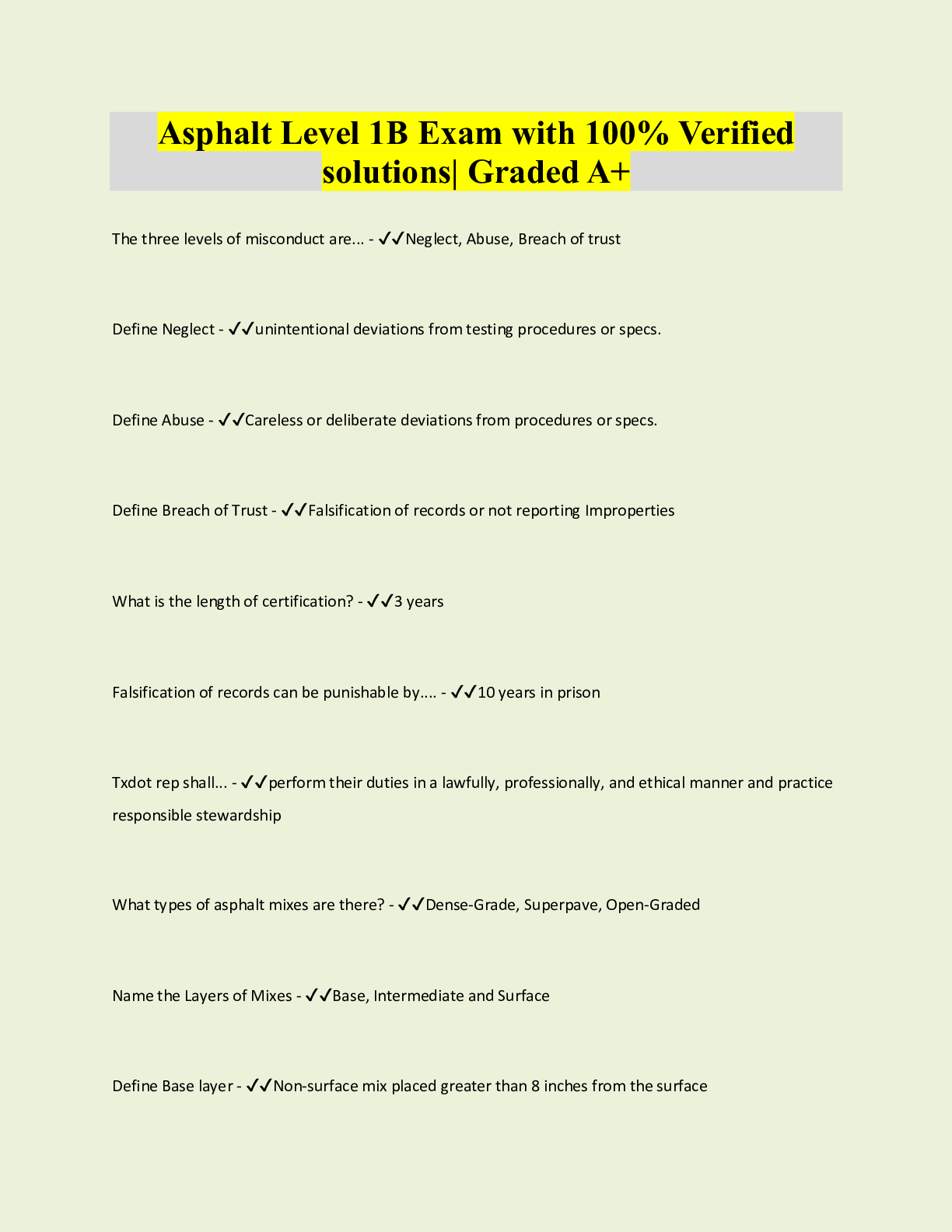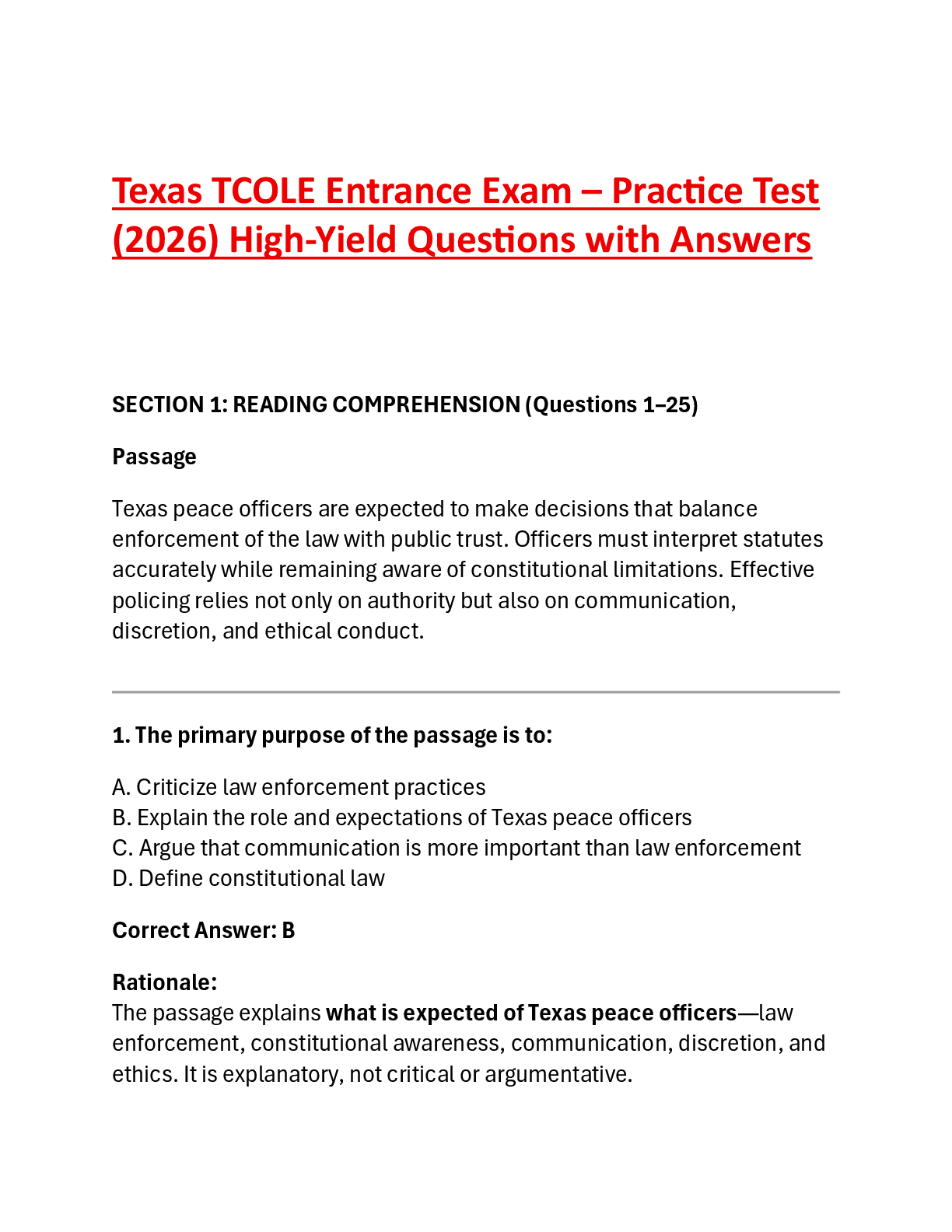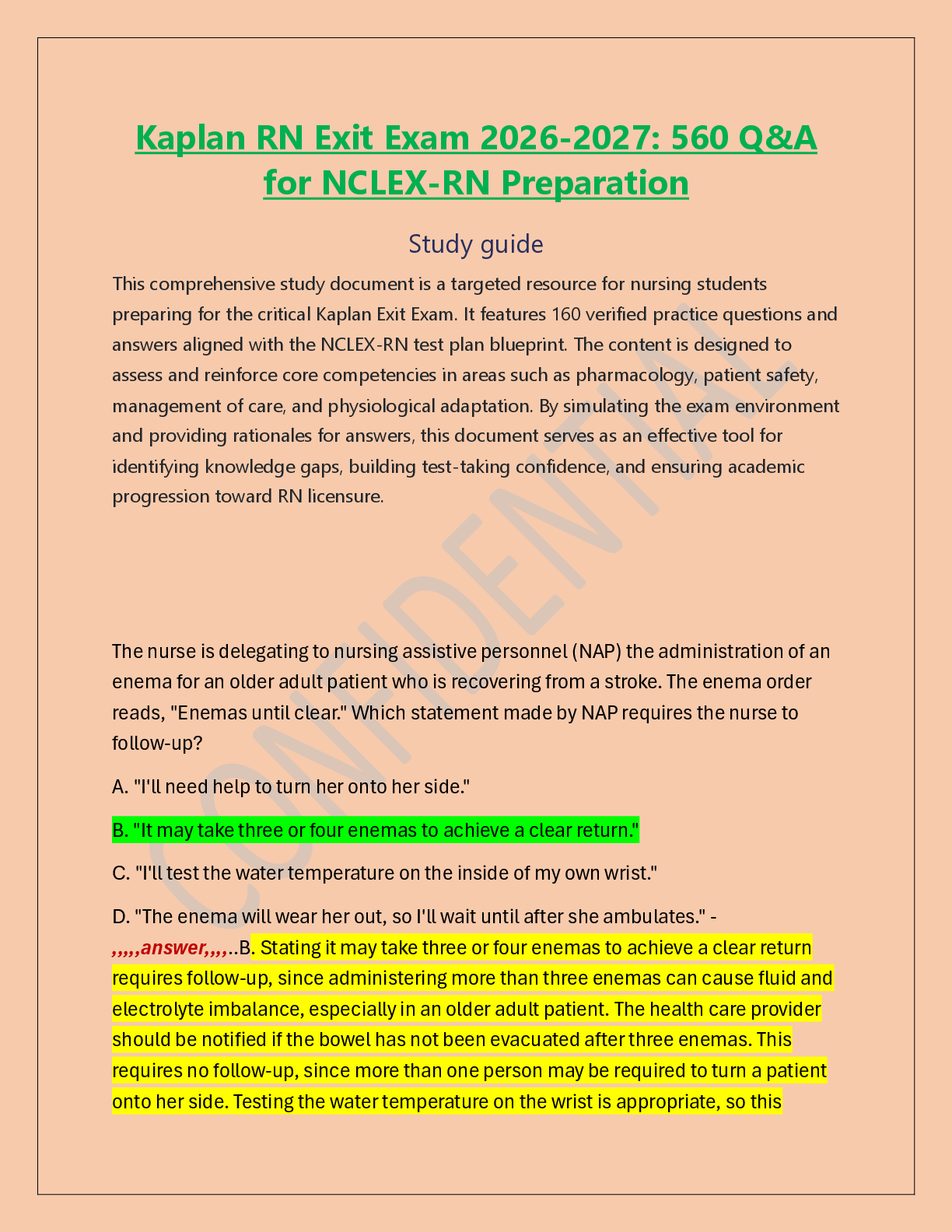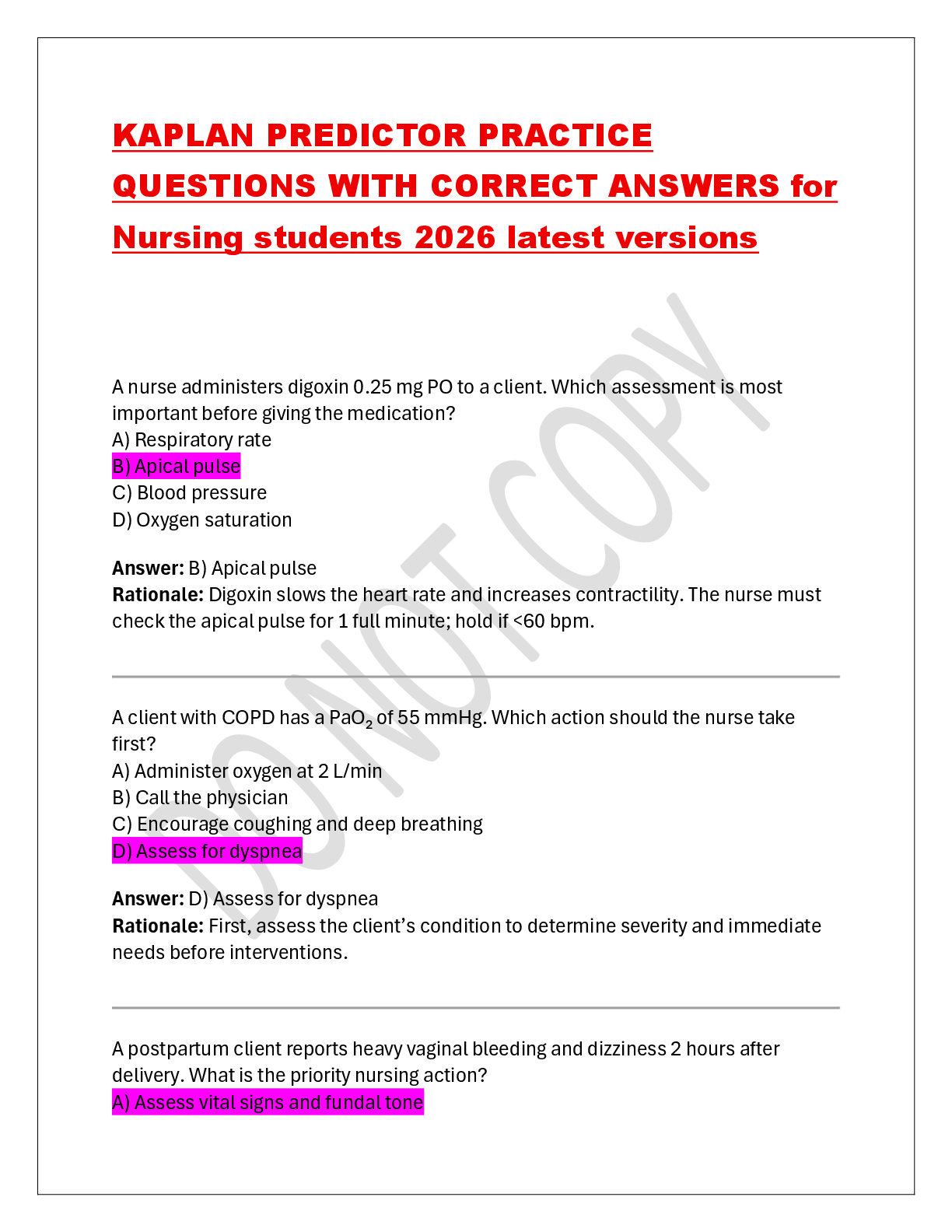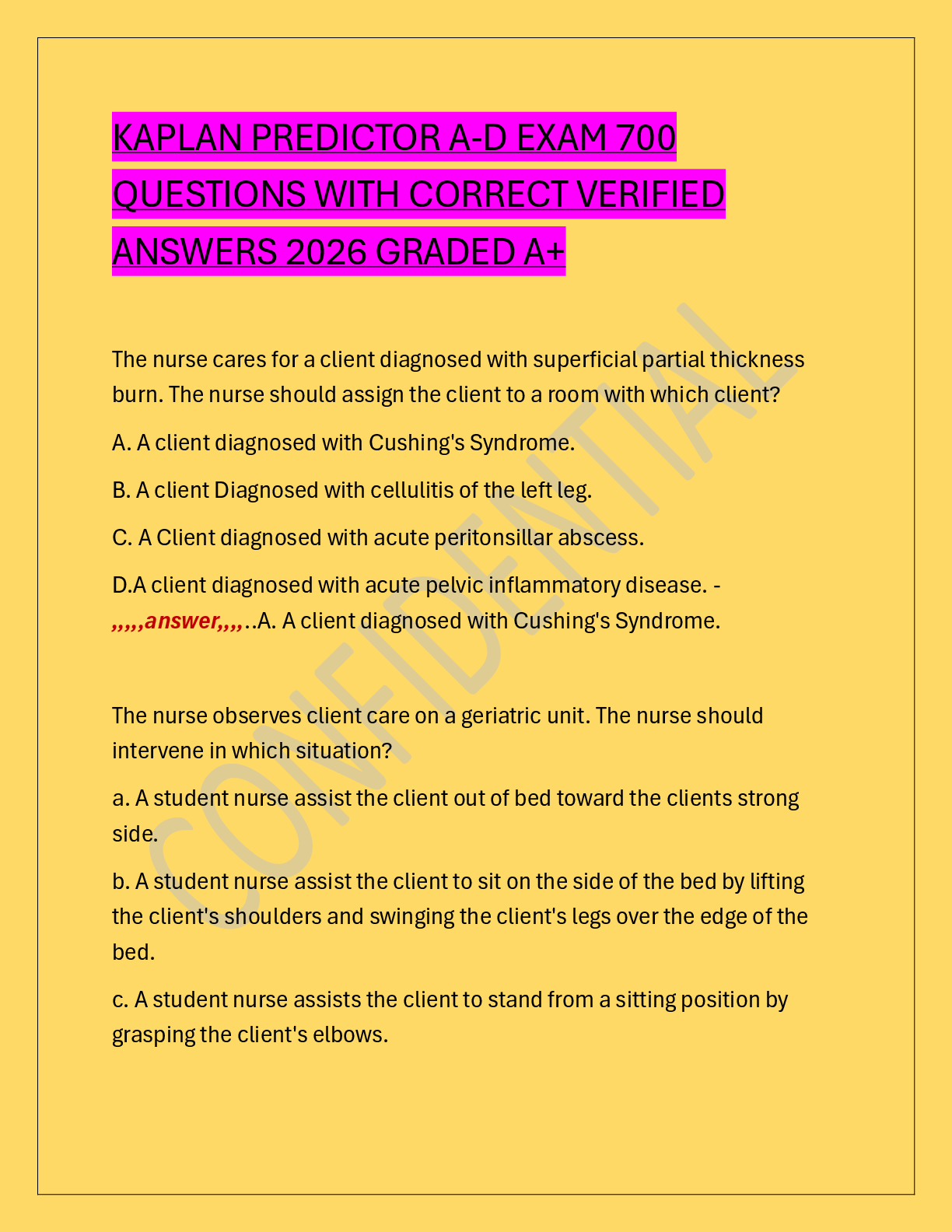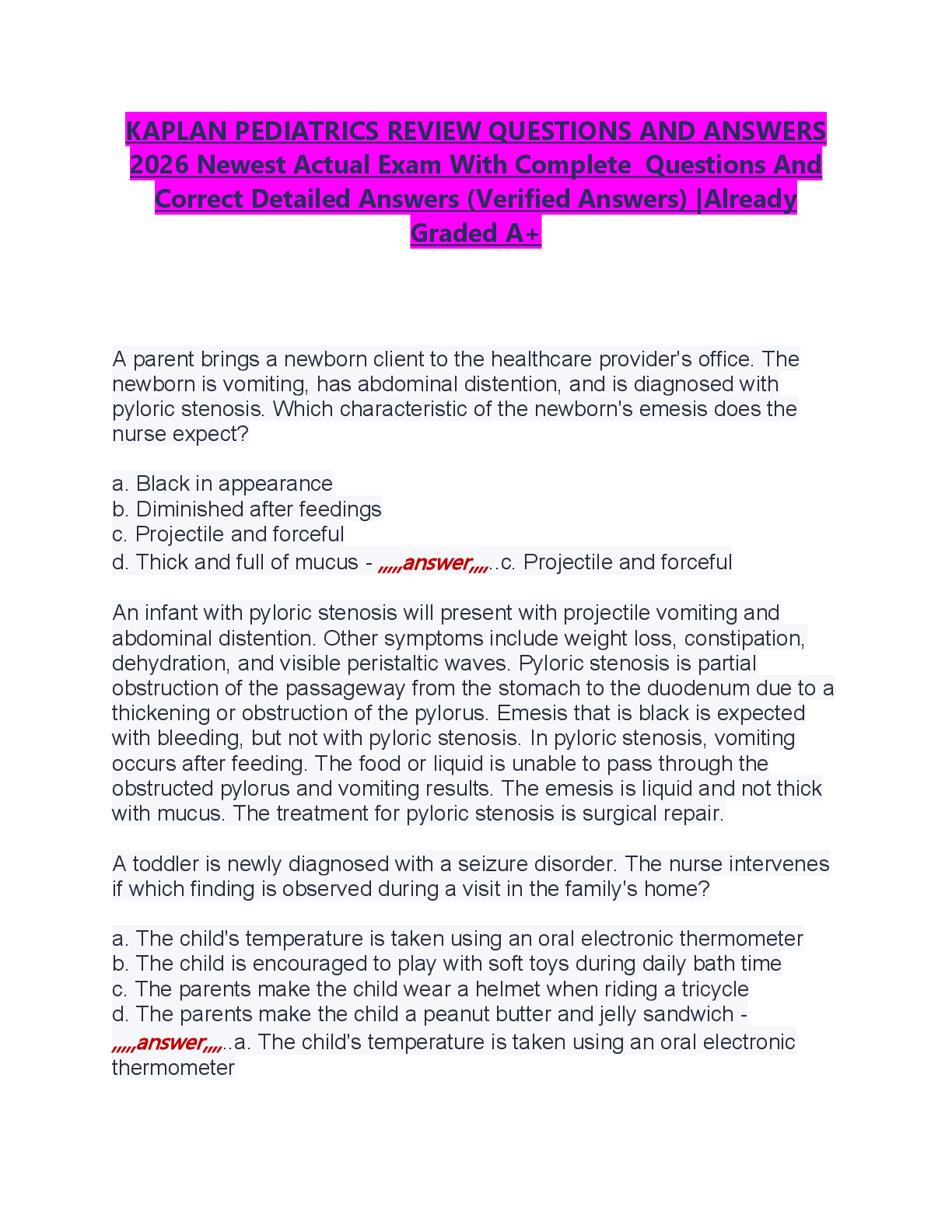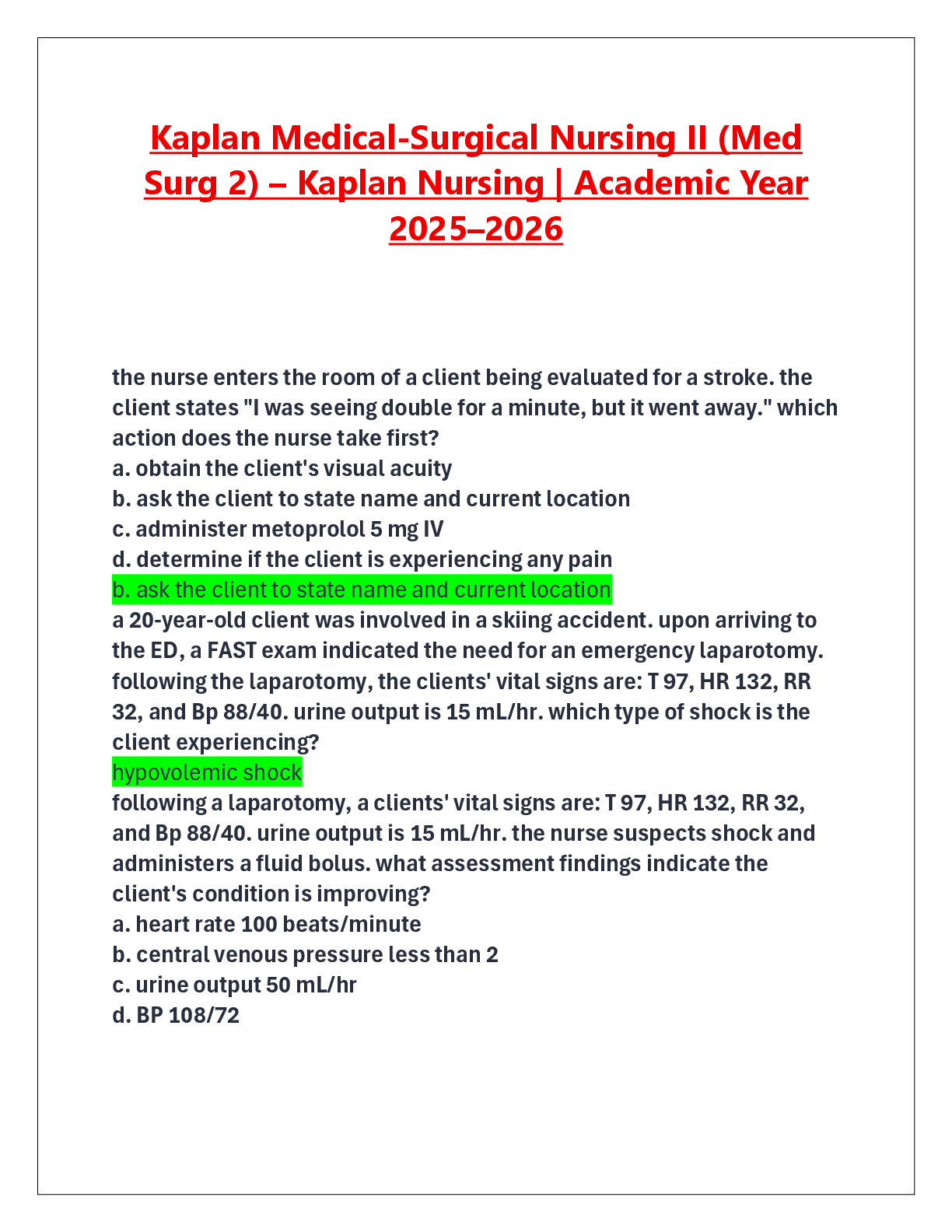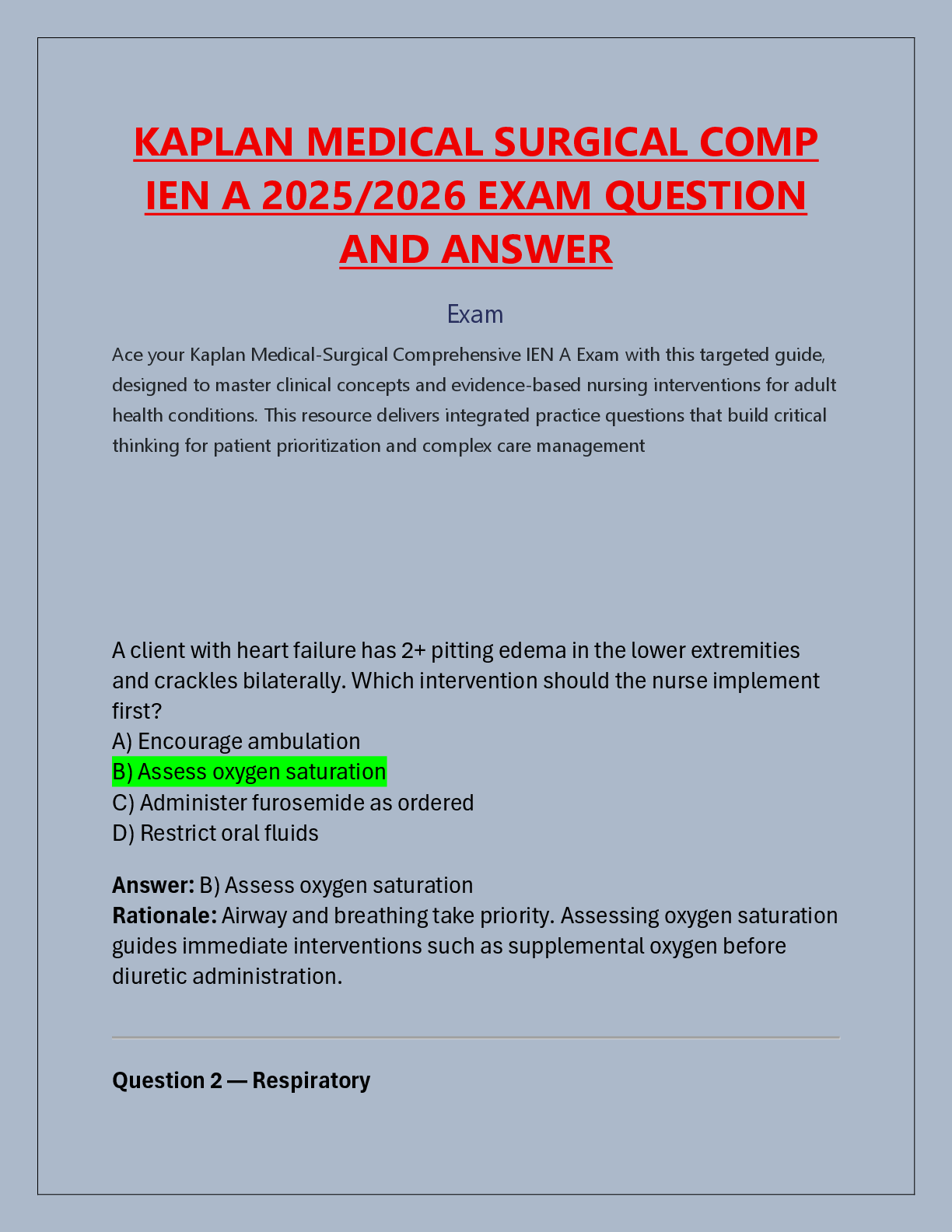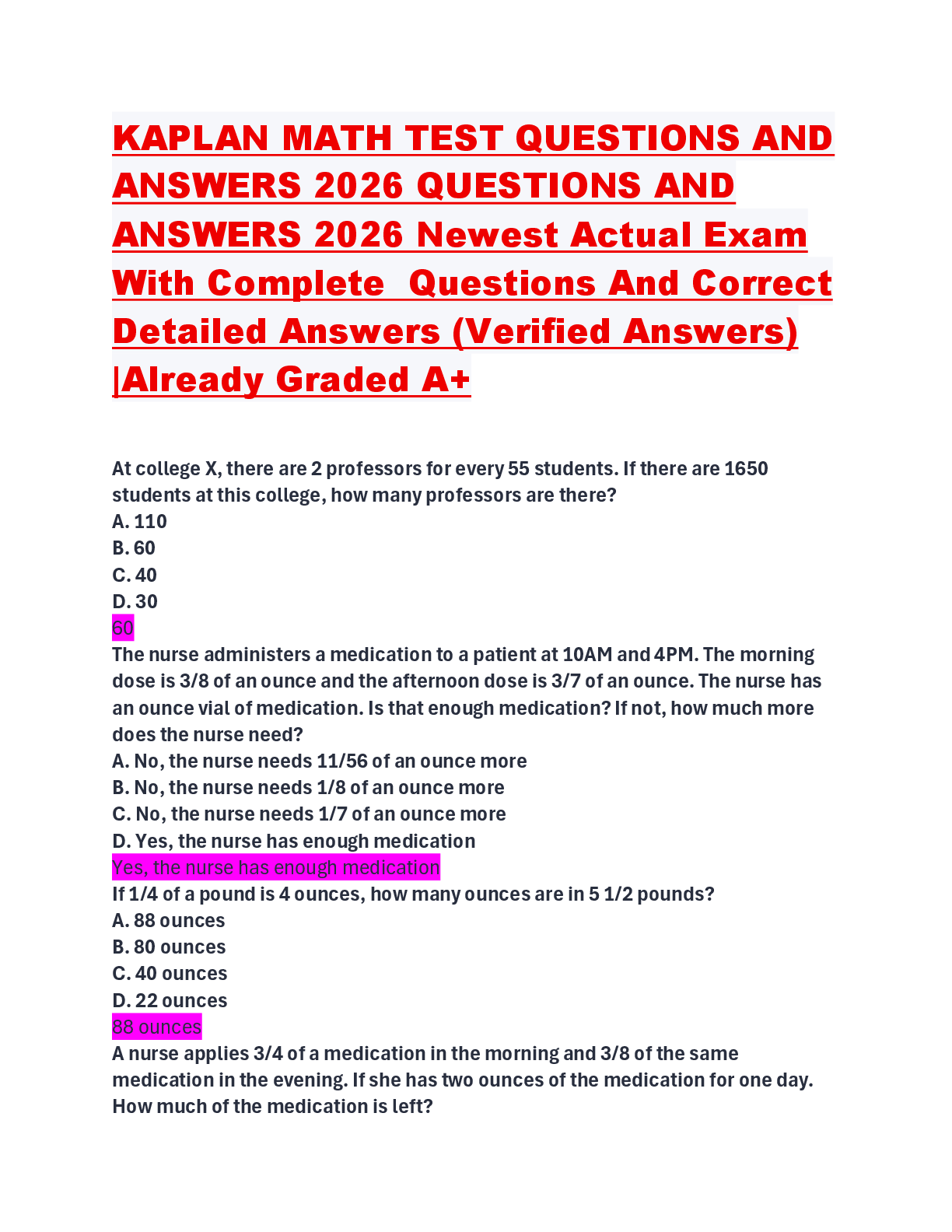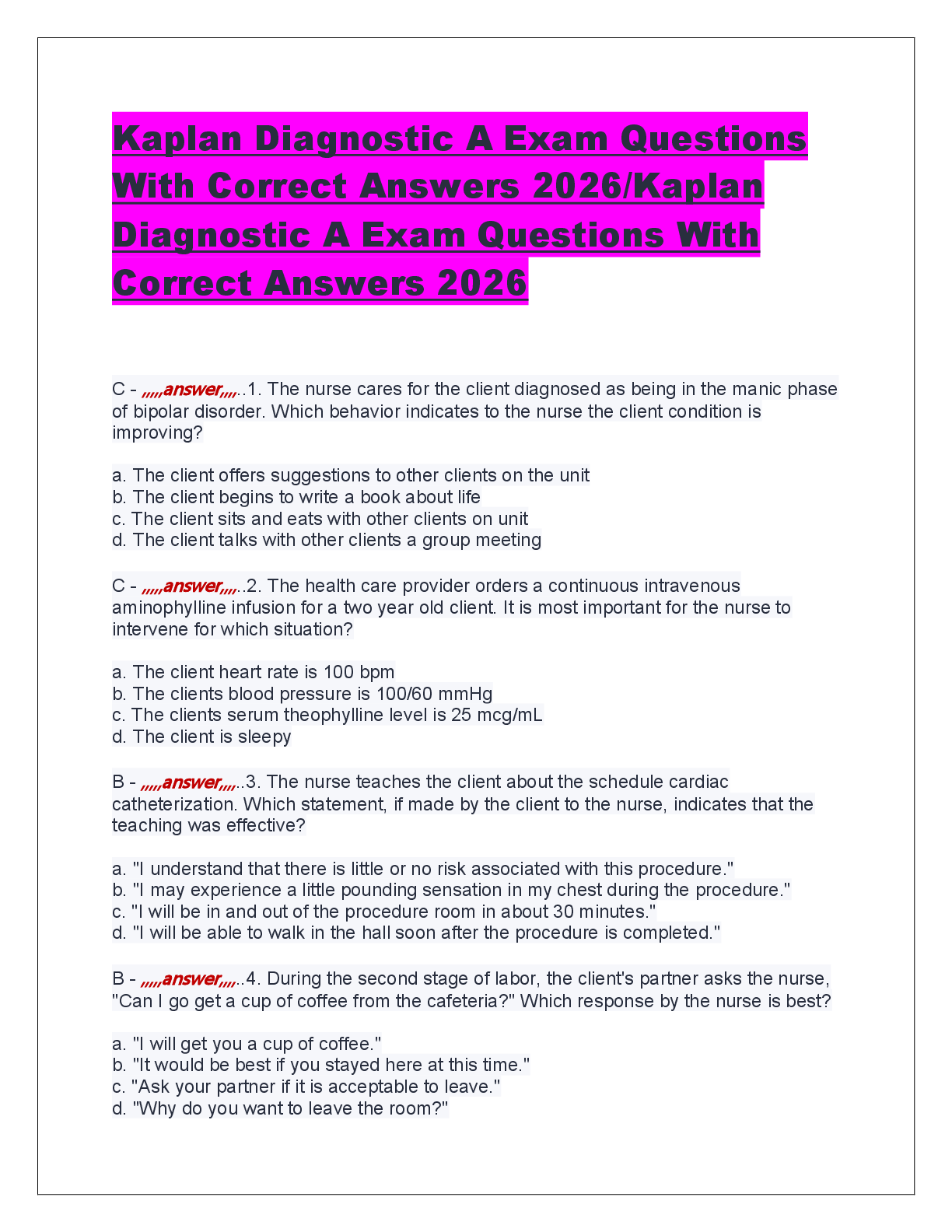2024 asvab Test | Questions and Answers With Complete Solutions
Document Content and Description Below
eology - ✔✔Study of the earth meteorology - ✔✔the study of weather classify rocks -3 - ✔✔sedimentary metamorphic igneous sedimentary - ✔✔-compile sand, seashells, and other materi ... als -grow in layers metamorphic - ✔✔-rocks forms b/c of heat and pressure below the Earth's surface -crystals may form ignous - ✔✔magma when it moves up surface therefore cooled lava form rocks richter magnitude scale - ✔✔Measures the Magnitude of the earthquake three zones where earthquakes strikes the most - ✔✔the pacific rim, the alpide seismic belt, the mid alantic ridgeearth has one planet that covers - ✔✔72% of the planet and 97% of the planets water 5 oceans - ✔✔Atlantic, Pacific, Indian, Arctic, Southern Earth's age - ✔✔4.6 billion years old Layers of the atmosphere - ✔✔troposphere, stratosphere, mesosphere, ionosphere, thermosphere, and exosphere Troposphere - ✔✔The lowest layer of Earth's atmosphere where do jet stream and all-weather changes occur? - ✔✔The lowest layer of Earth's atmosphere Stratosphere - ✔✔location of the ozone layer Mesosphere - ✔✔contains millions of meteros burn and third layer layer iononsphere - ✔✔reflects radio waves Thermosphere - ✔✔uppermost layerExosphere - ✔✔everything behind the outer space gases in the atmosphere - ✔✔Nitrogen - 78 percent. Oxygen - 21 percent. Argon - 0.93 percent. Carbon dioxide - 0.038 percent. air masses are cold when - ✔✔formed in Earth's northern and southern regions air masses are warm when - ✔✔formed at the equator front - ✔✔when two air masses meet when cold meets warm - ✔✔cold front when warm meets cold - ✔✔warm font weather - ✔✔daily atmospheric conditions climate - ✔✔patterns in weather over timewhat are clouds made from - ✔✔small droplets of water or ice that are spread out from each other. three types of clouds - ✔✔cirrus, cumulus, stratus cirrus - ✔✔feathers can indicate rain/snow cumulus - ✔✔White puffy pillows gather when heavy rain stratus - ✔✔foggy, flat Kelvin (K) freezing point - ✔✔273.15k kelvin (k) boiling point - ✔✔373.15 k Fahrenheit (*F) freezing point - ✔✔32 f Fahrenheit (*F) boiling point - ✔✔212 F Celsius (c) freezing point - ✔✔0 CCelsius (c) boiling point - ✔✔100 c Covert Celsius to Fahrenheit - ✔✔F=9/5 C times 32 Convert Fahrenheit to Celsius - ✔✔C= 5/9 (F-32) to get temps in kelvin - ✔✔K=C plus 273.15 oldest fossil is - ✔✔3.5 billion years AU - ✔✔astronomical unit light year - ✔✔the distance light travels in one year roughly 6 trillions years 1 AU = - ✔✔93 millions miles the avg distance from earth to sun is 93 millions miles which translate to - ✔✔8 light years planet - ✔✔a body larger than an asteroid or comet8 planets - ✔✔Mercury, Venus, Earth, Mars, Jupiter, Saturn, Uranus, Neptune 5 dwarf planets - ✔✔Ceres, Pluto, Haumea, Makemake, Eris Terristrial planets - ✔✔Mercury, Venus, Earth, Mars Terristrial planets are similar in - ✔✔size and composition Jovian Planets - ✔✔Jupiter, Saturn, Uranus, Neptune jovian planets are similar in - ✔✔having thick and gaseous outer layers moon makes a revoultion - ✔✔27 1/3 says lunar eclipse - ✔✔Sun, Earth, Moon solar eclipse - ✔✔Sun, Moon, Earth how many planets does mercury have - ✔✔0how many planets does venus have - ✔✔0 how many planets does earth have - ✔✔1 how many planets does mars have - ✔✔2 how many planets does Jupiter have - ✔✔63 how many planets does Saturn have - ✔✔61 how many planets does Uranus have - ✔✔27 how many planets does Neptune have - ✔✔13 meteor (shooting star) - ✔✔hits earths atmosphere and glows comets - ✔✔snowballs composed mainly of ice and rock long period comets - ✔✔200 years or more short period comets - ✔✔200 years or lessearthquakes occur along - ✔✔faults Dinosaurs - ✔✔Mesozoic Era what elements makes up most of earth's atmosphere - ✔✔nitrogen the process that takes place inside the sun's core is - ✔✔nuclear fusion absolute zero = - ✔✔0 Kelvin a comet's tail is visible when - ✔✔the comet is close enough to the sun radiometric dating - ✔✔observing the natural decay of radioactive elements in a fossil what are fast flowing narrow air currents located in earth atmosphere - ✔✔jet streams why are regions of Earth unequal in daylight and darkness - ✔✔because the earth rotates on a tilted axis three types of chemical reactions - ✔✔combination, decomposition, combustioncombination reaction - ✔✔2 or more reactants combine to form a single product Decomposition reactions - ✔✔breaks down into simpler substances like hydrogen, oxygen combustion reactions - ✔✔burning involves with carbon and oxygen electrons - ✔✔Negatively charged particles neutrons - ✔✔no charge Proton - ✔✔positive charge weight - ✔✔is a measure of the force of gravity on an object mass - ✔✔the amount of matter in an object Newton's First Law - ✔✔-an object will stay at rest until a force acted upon - there needs to be an equal balanced newton's second law - ✔✔the harder you throw a ball, the more the ball acceleratesNewton's third law - ✔✔For every action, there is an opposite reaction Newton's Law or Universal Gravitation - ✔✔all objects in the universe attract each other with equal force calc work performance - ✔✔w=fd energy is measured - ✔✔Joules P.E turns in to - ✔✔K.E when moving kinetic energy - ✔✔energy of motion potential energy - ✔✔stored energy calc power equation - ✔✔p= work /time power is measure in - ✔✔watts shorter wavelengths - ✔✔higher frequency longer wavelength - ✔✔lower frequencynonrenewable resource - ✔✔oil, natural gas, and coal renewable resource - ✔✔wind energy, and solar energ [Show More]
Last updated: 1 year ago
Preview 4 out of 11 pages

Loading document previews ...
Buy this document to get the full access instantly
Instant Download Access after purchase
Buy NowInstant download
We Accept:

Reviews( 0 )
$10.00
Can't find what you want? Try our AI powered Search
Document information
Connected school, study & course
About the document
Uploaded On
Sep 12, 2024
Number of pages
11
Written in
All
Additional information
This document has been written for:
Uploaded
Sep 12, 2024
Downloads
0
Views
28

